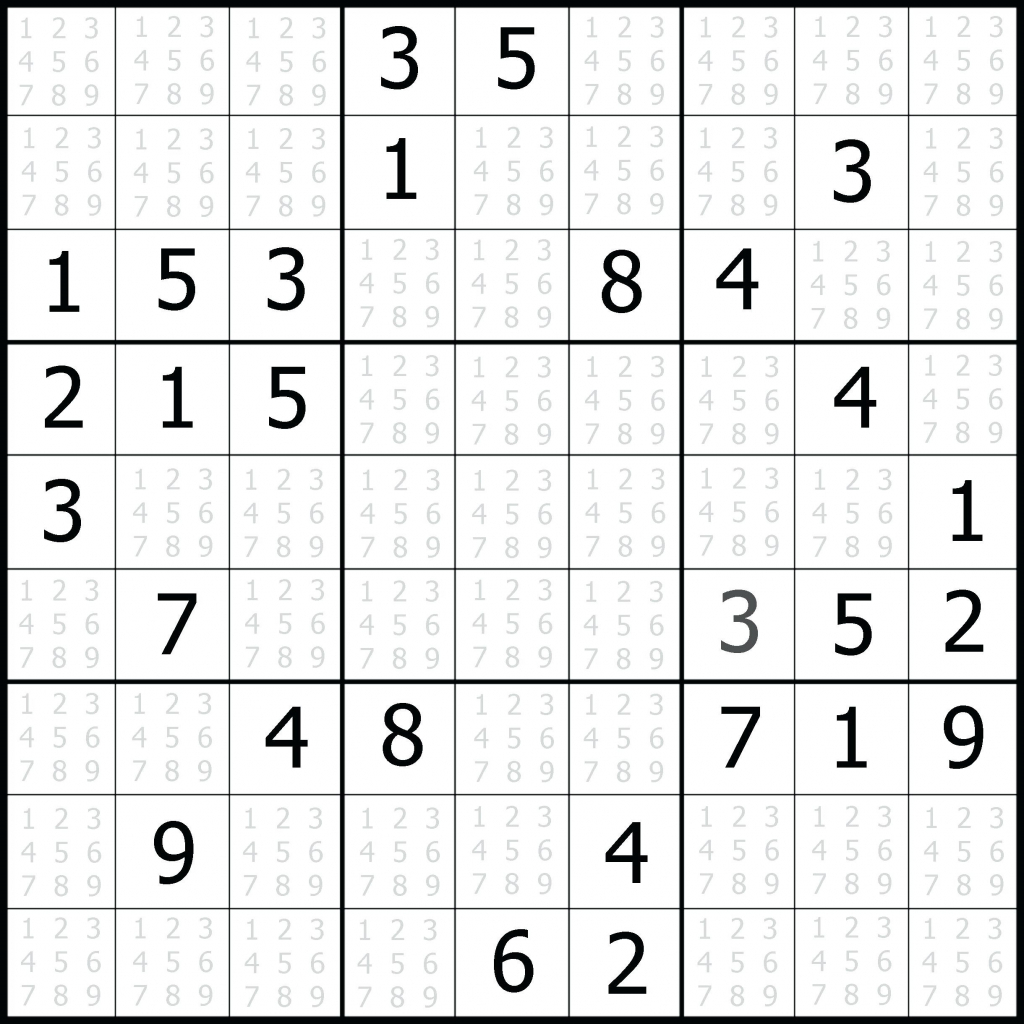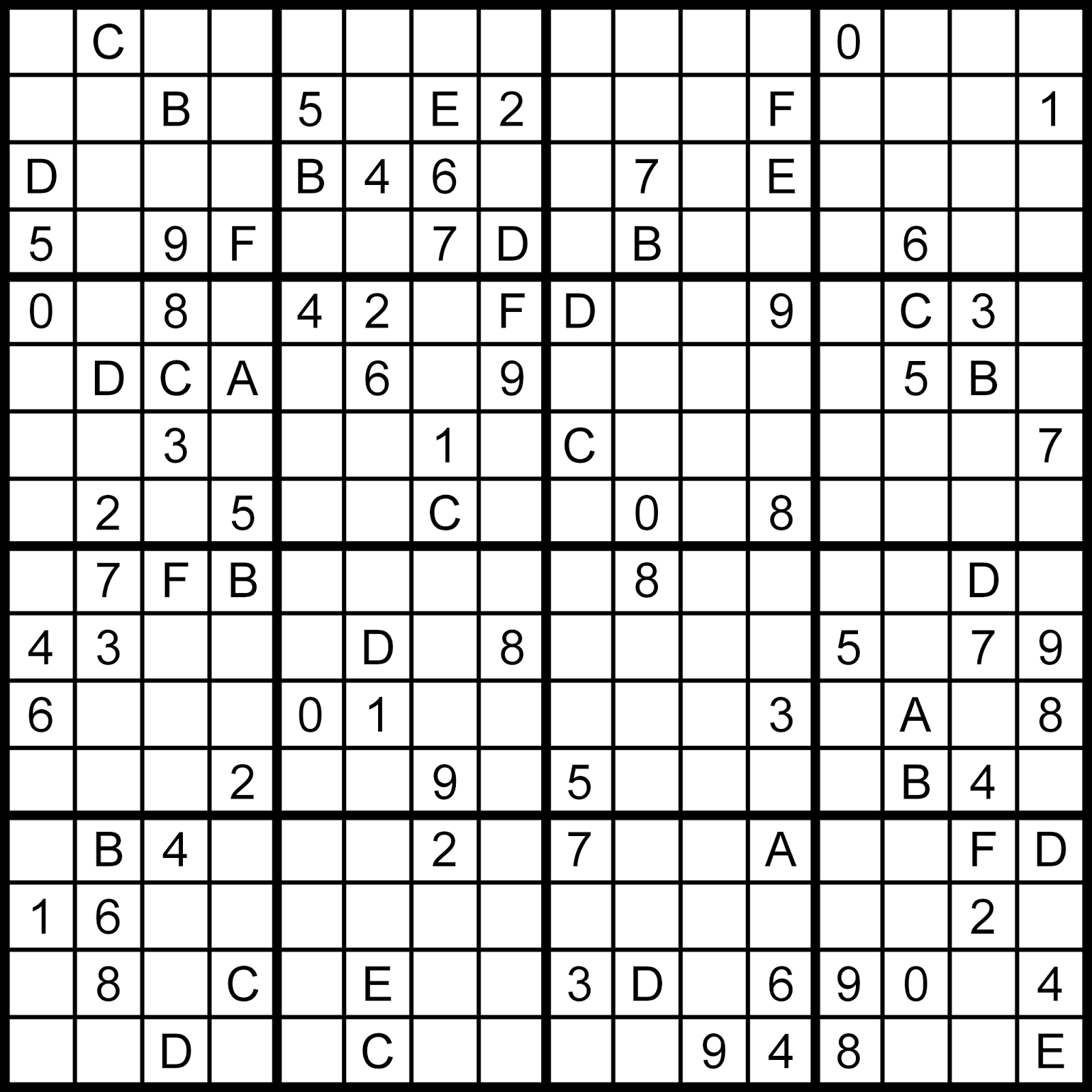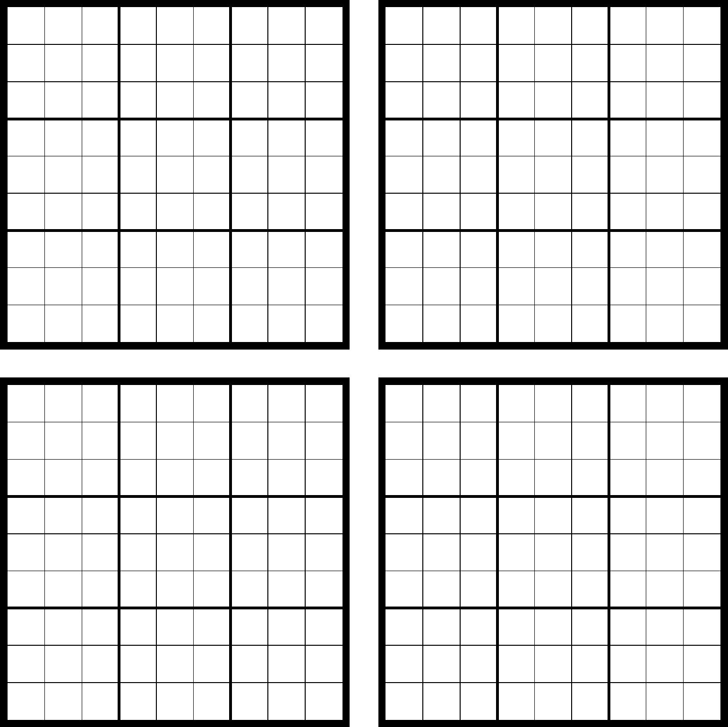Sudoku Template: Unlock the World of Puzzle Creation
Discover the power of sudoku templates and how they revolutionize puzzle creation. From basic to advanced templates, customization to software generation, this guide has it all. Get ready for an exciting journey into the realm of sudoku templates.
Introduction to Sudoku Templates

Sudoku templates are pre-designed grids that serve as a starting point for creating Sudoku puzzles. The purpose of these templates is to provide a structure or framework on which the puzzle can be built. They consist of empty cells that need to be filled with numbers, following certain rules and patterns.
Using templates for creating Sudoku puzzles is important because it helps maintain consistency and ensures that the puzzle is solvable. Templates provide a balanced distribution of numbers and maintain the unique solution property of Sudoku. They also help puzzle creators save time and effort by providing a starting point, eliminating the need to create the entire puzzle from scratch.Here
are some examples of popular Sudoku templates:
Classic Sudoku Template
The classic Sudoku template consists of a 9×9 grid divided into nine 3×3 boxes. Each box, row, and column should contain all the numbers from 1 to 9 without repetition. This template serves as the foundation for most Sudoku puzzles.
Irregular Sudoku Template
The irregular Sudoku template, also known as Jigsaw Sudoku, has a similar structure to the classic template but with irregularly shaped boxes. These irregular shapes add an extra challenge to the puzzle, making it more interesting for Sudoku enthusiasts.
Diagonal Sudoku Template
The diagonal Sudoku template is similar to the classic template, but with the additional rule that each diagonal line should contain all the numbers from 1 to 9 without repetition. This variation adds a new dimension to the puzzle and requires additional strategic thinking.Using
these templates as a base, puzzle creators can modify and customize the puzzles by filling in certain cells with numbers, adding clues, and adjusting the difficulty level. This allows for a wide variety of Sudoku puzzles to be created while maintaining the logical and mathematical principles of the game.Remember,
the key to creating a good Sudoku puzzle is to ensure that it has a unique solution and can be solved using logic and reasoning, without the need for guessing or trial and error. Happy Sudoku solving!
Creating a Basic Sudoku Template

Sudoku is a popular number puzzle game that requires logical thinking and problem-solving skills. To create a basic 9×9 Sudoku template, follow these steps:
- Start with a blank 9×9 grid. This grid will serve as the foundation for your Sudoku puzzle.
- Divide the grid into 9 smaller grids. Each smaller grid should be 3×3 in size. These smaller grids are known as “boxes” or “regions.”
- Label each box with a number from 1 to 9. This will help you keep track of the placement of numbers in the template.
- Decide on the placement of numbers in the template for a balanced puzzle. A balanced puzzle means that each number from 1 to 9 appears only once in each row, column, and box.
- Start by placing a few numbers in the template to provide some initial clues. Make sure to distribute the numbers evenly across the grid.
- Avoid placing numbers in a way that creates an obvious pattern or solution. The goal is to create a challenging puzzle that requires logical reasoning to solve.
- Once you have placed a few numbers, continue filling in the remaining cells of the template, making sure to follow the rules of Sudoku.
- Test the puzzle by solving it yourself or asking someone else to solve it. Make any necessary adjustments to ensure the puzzle has a unique solution.
Dividing the Template into 9 Smaller Grids
To divide the template into 9 smaller grids, follow these steps:
- Draw two vertical lines to divide the grid into three equal columns.
- Draw two horizontal lines to divide the grid into three equal rows.
- This will create 9 smaller grids, each measuring 3×3 cells.
- Label each grid with a number from 1 to 9 to keep track of the placement of numbers.
Placement of Numbers in the Template for a Balanced Puzzle
To create a balanced puzzle, follow these guidelines for the placement of numbers:
- Each row, column, and box should contain all numbers from 1 to 9 exactly once.
- Avoid placing numbers that create an obvious pattern or make the puzzle too easy to solve.
- Distribute the initial clues evenly across the grid to provide a starting point for solving the puzzle.
- Remember that a Sudoku puzzle should have a unique solution. Avoid placing numbers that lead to multiple valid solutions.
- As you fill in the remaining cells, make sure to follow the rules of Sudoku and ensure that each number appears only once in each row, column, and box.
Creating a basic Sudoku template requires careful consideration of the placement of numbers to ensure a balanced and challenging puzzle. By following these steps, you can create your own Sudoku puzzles to enjoy and share with others.
Advanced Sudoku Templates

Sudoku templates come in various variations, offering different grid sizes and levels of complexity. In addition to the standard 9×9 grid, there are advanced Sudoku templates that include 6×6 and 16×16 grids. These variations provide a new challenge for Sudoku enthusiasts and require different solving strategies.
Variations of Sudoku Templates
Creating advanced Sudoku templates involves designing grids with different sizes and structures. Here are two popular variations:
1. 6×6 Grid
This template consists of a 6×6 grid, divided into six 2×3 boxes. With fewer cells compared to the standard 9×9 grid, solving a 6×6 Sudoku requires a different approach. The numbers 1 to 6 must be placed in each row, column, and box without repetition.
2. 16×16 Grid
This template presents a greater challenge with a 16×16 grid divided into sixteen 4×4 boxes. In addition to the numbers 1 to 9, this variation includes the letters A to G. The goal is to fill each row, column, and box with the numbers and letters without any duplicates.
Challenges and Strategies for Advanced Sudoku Templates
Creating advanced Sudoku templates involves overcoming several challenges. Here are some key factors to consider:
1. Grid Complexity
As the grid size increases, so does the complexity of the puzzle. Designing a template that ensures a unique solution becomes more difficult. It requires careful consideration of the placement of numbers or letters to avoid multiple solutions.
2. Solving Strategies
Advanced Sudoku templates require the use of additional solving strategies beyond the basic techniques used in standard 9×9 Sudoku. Players need to adapt and develop new strategies to tackle the increased complexity of the puzzles.
Examples of Advanced Sudoku Templates
1. 6×6 Sudoku Template
Grid Size
6×6
Box Structure
Do you love solving sudoku puzzles? If so, then the Sudoku Killer Calculator is a tool that you must have. This calculator is designed to help you solve killer sudoku puzzles with ease. It provides you with step-by-step instructions on how to solve each puzzle, making the process much simpler and enjoyable.
You can access the Sudoku Killer Calculator at sudoku killer calculator . With this handy tool, you’ll never have to struggle with killer sudoku puzzles again!
Six 2×3 boxes
Numbers to Place
The Epoch Times Sudoku Hard is a challenging puzzle game that will put your logical thinking skills to the test. This sudoku game offers a higher level of difficulty compared to the average sudoku puzzles, making it perfect for those who crave a real challenge.
You can find this game at epoch times sudoku hard . So if you’re ready to push your brain to its limits and have some fun in the process, give the Epoch Times Sudoku Hard a try!
1 to 6 This template challenges players to fill in the grid with the numbers 1 to 6, ensuring that each row, column, and box contains no duplicates.
2. 16×16 Sudoku Template
Grid Size
16×16
Box Structure
Sixteen 4×4 boxes
Numbers and Letters to Place
1 to 9, A to G This advanced template introduces the use of letters in addition to numbers. Players must fill in the grid with the numbers 1 to 9 and the letters A to G, ensuring no duplicates in each row, column, and box.These
advanced Sudoku templates provide a fresh and challenging experience for Sudoku enthusiasts. By exploring different grid sizes and structures, players can further develop their problem-solving skills and enjoy the intricate puzzles these templates offer.
Customizing Sudoku Templates

Sudoku templates can be customized to create themed puzzles, adding a unique twist to the traditional Sudoku experience. By incorporating symbols and colors, you can enhance the visual appeal of the puzzle and make it more engaging for the players.
Additionally, you can add additional solving techniques to the template to increase the difficulty level, providing a challenge for Sudoku enthusiasts.
Customizing with Themed Puzzles
Themed puzzles are a great way to add creativity and excitement to Sudoku templates. You can choose a specific theme, such as animals, nature, or sports, and incorporate relevant symbols or images into the puzzle. For example, instead of using numbers, you can replace them with symbols representing different animals or objects related to the chosen theme.
This not only adds visual interest but also provides an extra layer of fun for the players.
Using Symbols and Colors
Symbols and colors can be used to enhance the visual appeal of Sudoku templates. Instead of using plain numbers, you can assign unique symbols to each number, making the puzzle visually appealing. Additionally, you can use different colors to differentiate between the numbers or symbols, creating a vibrant and visually stimulating puzzle.
This can make the solving experience more enjoyable and engaging for the players.
Adding Additional Solving Techniques
To increase the difficulty level of a Sudoku template, you can add additional solving techniques beyond the traditional ones. For example, you can include techniques like X-Wing, Swordfish, or Jellyfish, which require more advanced logical thinking and deduction skills. These techniques involve identifying patterns and making inferences based on the given numbers, adding an extra layer of complexity to the puzzle.
By incorporating these techniques, you can challenge experienced Sudoku players and provide them with a more satisfying solving experience.
Using Software to Generate Sudoku Templates

Generating Sudoku templates manually can be a time-consuming task, especially if you want to create a large number of unique and challenging puzzles. That’s where software comes in handy. Using software to generate Sudoku templates offers several benefits:
Efficiency
Software tools can quickly generate a large number of Sudoku templates with unique solutions. This saves time and effort compared to creating them manually.
Customization
Many software tools allow you to customize various aspects of the Sudoku puzzles, such as the grid size, difficulty level, and design. This enables you to create puzzles that cater to specific preferences or requirements.
Complexity and Challenge
Software can create Sudoku templates with varying levels of difficulty, allowing you to generate puzzles that range from easy to extremely challenging. This ensures a diverse range of puzzles for different skill levels.When it comes to creating Sudoku templates using software, there are several popular tools available:
1. Sudoku Dragon
This software offers a wide range of features for creating and solving Sudoku puzzles. It includes options to generate templates of different sizes, difficulty levels, and themes.
2. HoDoKu
HoDoKu is a free software tool that provides advanced features for generating and solving Sudoku puzzles. It offers various algorithms to create unique and challenging templates.
3. Sudoku Generator
This online tool allows you to generate Sudoku templates instantly. It provides options to customize the grid size, difficulty level, and even offers a preview of the solution.To effectively use software for creating unique and challenging Sudoku puzzles, consider the following tips:
1. Explore the customization options
Take advantage of the software’s features to customize the grid size, difficulty level, and design elements. Experiment with different settings to create puzzles that suit your preferences or the intended audience.
2. Test the difficulty level
Generate a sample puzzle and solve it yourself to ensure that the difficulty level matches your expectations. Adjust the settings if necessary to achieve the desired level of challenge.
3. Add unique patterns or constraints
Some software tools allow you to add specific patterns or constraints to the Sudoku templates. This can make the puzzles more interesting and provide additional challenges for the solvers.
4. Seek feedback
Share the generated puzzles with others and gather feedback on their difficulty level, clarity, and overall enjoyment. This can help you refine the puzzles and make them more engaging for the intended audience.Using software to generate Sudoku templates offers efficiency, customization, and the ability to create unique and challenging puzzles.
With the right tools and effective utilization, you can create a wide variety of Sudoku puzzles that cater to different skill levels and preferences.
FAQ Insights: Sudoku Template
What is a Sudoku template and why is it important?
A Sudoku template is a pre-designed grid structure that serves as a starting point for creating Sudoku puzzles. It provides a consistent layout and ensures the puzzle’s logic is intact. Templates are crucial as they save time and effort in puzzle creation while maintaining the puzzle’s integrity.
Can I create Sudoku puzzles using different grid sizes?
Yes, advanced Sudoku templates allow for various grid sizes, such as 6×6 and 16×16. These larger or smaller grids provide a unique challenge and cater to different skill levels and preferences.
How can I customize Sudoku templates?
Customizing Sudoku templates is a great way to add a personal touch and create themed puzzles. You can modify the appearance with symbols and colors, making the puzzle visually appealing. Additionally, you can add extra solving techniques to increase difficulty and create a more challenging experience.
Are there software tools available for generating Sudoku templates?
Yes, there are several software tools specifically designed for generating Sudoku templates. Popular options include Sudoku Dragon, HoDoKu, and Sudoku Studio. These tools offer features like automatic generation, customization options, and puzzle-solving assistance.
How can I make unique and challenging puzzles using software?
To create unique and challenging puzzles using software, you can experiment with different settings like grid size, difficulty levels, and puzzle variations. Additionally, you can utilize advanced features provided by the software, such as pattern recognition and symmetry options, to add complexity and intrigue to your puzzles.